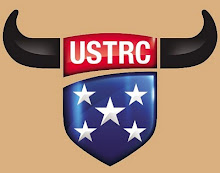Pushing the Barrier – November 2011
Rich Skelton and I have been teaching a few schools recently. Recently we had a school in Amarillo and one at Rich’s house in Llano. We have a school in Elk City, OK this weekend, and one in Idaho the first week in November.
We have made a significant change in our schools where the first thing we do is film students roping steers. Then we stop and watch it on a television to show people what they are doing wrong. This is so much more effective than explaining what they did wrong after their run is finished. This way they don’t have to try and process the information, they can see it themselves and know immediately what we’re explaining. Using this method has made a huge difference in how quickly people improve.
Video cameras and video technology have improved tremendously in the last four or five years. The biggest improvement is the ability to freeze-frame in high quality letting us be more effective teachers. We can freeze-frame or slow down the video and show students in great detail exactly what’s happening and how to fix it.
The number of people who have never watched themselves rope on film is amazing to me. Many of these people have roped for more than twenty years. I have used a video camera as tool since I was 14 or 15. The quality was not particularly good back then, but it was still a valuable tool.
If you are going to spend your time, effort and money roping, you need to take the time to film yourself and watch it. This way you can see what you and your horse are doing and where you need to improve. It is incredibly hard to be aware and able to pin point this while making a run. Seeing it with your own eyes makes all the difference in the world. If you are serious about improving your roping, this is one of the most valuable tools you can use.
What’s new with me: This week we’re headed to Oklahoma City and the USTRC Finals. I have a terrific opportunity for speedroping.com subscribers. We will have a drawing for a complete NFR package that includes two tickets for the last five performances to this year’s NFR, along with a suite at the MGM Grand Hotel.
To qualify for this drawing, you need to be a speedroping.com subscriber and wear a speedroping.com patch while competing. To subscribe to our site and/or pick up your patch stop by our booth located in the coliseum, between the Hot Heels and Priefert booths near the concession stand. The drawing will take place on Sunday, right after the #8 roping starts. You do not have to be present to win. Subscribers will also be eligible for the drawing for a private school at my house.
At speedroping.com, we now have 1,170 videos online and have crossed the 1,000,000 videos watched mark. It is a very exciting milestone for me. Please feel free to stop by our booth at the USTRC Finals.




























